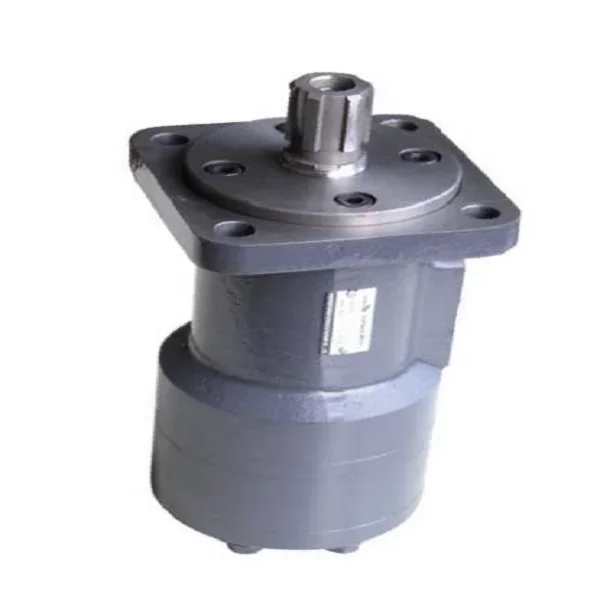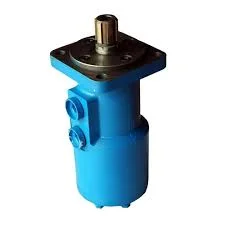Hydraulic motors are critical components in various industrial applications, enabling the efficient conversion of hydraulic energy into mechanical power. A fundamental challenge in hydraulic motor design is ensuring that these devices can withstand high pressure environments while maintaining optimal efficiency and performance. One essential aspect in achieving this lies in the design of the shaft seal. In this article, we will delve into the importance of shaft seal design in hydraulic motors and how it enhances their pressure handling capabilities.
Understanding Hydraulic Motors
Before diving into the specifics of shaft seal design, let's briefly understand hydraulic motors. These devices utilize pressurized fluid to generate rotary motion, allowing them to drive machinery efficiently. The primary components of a hydraulic motor include a housing, a rotor, and a shaft that transmits the generated torque. To ensure maximum efficiency and longevity, a well-designed and robust shaft seal is vital.

The Role of Shaft Seals
Shaft seals play a crucial role in preventing fluid leakage, contamination, and the ingress of external substances into the hydraulic motor. By sealing the interface between the rotor shaft and the motor housing, these seals maintain the ideal operating conditions within the motor and protect it from potentially damaging factors.
Enhancing Pressure Handling Capabilities
The pressure handling capabilities of a hydraulic motor are significantly influenced by the design and quality of its shaft seal. Here are some key aspects that contribute to enhanced pressure handling:
1. Material Selection:
Shaft seals are typically made from high-performance elastomeric materials such as nitrile rubber, polyurethane, or fluororubber. The choice of material is crucial as it determines the seal's resistance to pressure, temperature, and chemical exposure. Additionally, the material must provide sufficient flexibility to accommodate shaft movement without sacrificing sealing effectiveness.
2.Sealing Mechanisms:
Different types of sealing mechanisms exist, including lip seals, labyrinth seals, and mechanical face seals. Each mechanism offers unique advantages and limitations concerning pressure handling capabilities. For instance, lip seals are cost-effective and offer optimal sealing at lower pressures, while mechanical face seals exhibit superior performance in high-pressure environments.
3. Seal Geometry:
The geometry of the seal plays a significant role in determining its ability to withstand pressure. Design factors such as lip shape, seal width, and contact areas are optimized to minimize leakage and resist extrusion under high-pressure conditions. Advanced computer-aided design methods and finite element analysis techniques are employed to optimize seal geometries for enhanced pressure handling.
4. Surface Finish and Coatings:
The surface finish of the shaft seal and the mating components can significantly impact pressure handling capabilities. A smooth surface finish reduces friction and wear, improving overall sealing effectiveness. Additionally, specialized coatings can be applied to enhance resistance against abrasion, chemical attacks, and other factors that may compromise the seal's integrity.
5. Seal Retention Methods:
The method employed to retain the seal on the shaft also plays a role in pressure handling capabilities. The seal must remain securely in place, even when subjected to significant axial and radial forces generated during operation. Various retention methods, such as snap rings or interference fits, are utilized based on individual motor designs and intended applications.

Conclusion
The design of shaft seals plays a crucial role in enhancing the pressure handling capabilities of hydraulic motors. A well-designed seal ensures efficient energy conversion, minimizes fluid leakage, and protects the motor from external contaminants. By carefully considering material selection, sealing mechanisms, seal geometry, surface finish, and retention methods, engineers can optimize pressure capabilities, increasing the reliability and longevity of hydraulic motors. As technology advances, ongoing research and development in seal design will continue to push the boundaries of what is possible in high-pressure hydraulic motor applications.
At Shanghai AJA Technology Co., Ltd., we take pride in being a leading manufacturer and supplier of high-quality hydraulic components, including the BM3 series hydraulic motor. Our commitment to providing exceptional customer service is unmatched, and our knowledgeable staff is always available to assist you with any hydraulic motor cleaning or customization needs. As a trusted BM3 series hydraulic motor supplier and manufacturer, we understand the importance of delivering reliable and efficient hydraulic motors that meet your specific requirements. Contact us today to learn more about our hydraulic motors and how we can help you optimize your hydraulic system.



